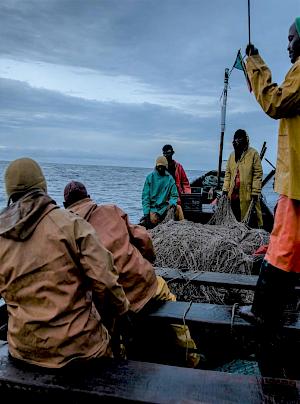It Is Time To Mainstream Biodiversity To Reach Sustainable Development Goals
As we approach the midpoint to deliver the 2030 Agenda for Sustainable Development, TRAFFIC flags that biodiversity is still not sufficiently integrated into the implementation of the SDGs.
Ahead of the Ministerial Segment of the United Nations High-Level Political Forum on Sustainable Development (HLPF) on 17-19 July, TRAFFIC underscores the urgency to mainstream biodiversity to accelerate progress for people and the planet. Decision-makers must pay attention to global agreements that protect and conserve nature, including the benefits of legal, safe and sustainable trade of wild species.
The impacts of the pandemic, geopolitical shocks, and subsequent economic consequences in reaching the SDGs by the 2030 deadline have intensified the challenges in tackling the ‘triple threat’: unprecedented biodiversity loss, emerging infectious disease risks, and the climate crisis.
Biodiversity and healthy ecosystems are fundamental to achieving the SDGs. TRAFFIC urges Member States at HLPF to recognize the Kunming-Montreal Global Biodiversity Framework, and commit to stronger action to protect, restore and sustainably and equitably use natural resources.”
Richard Scobey, TRAFFIC Executive Director
 Outlined by the IPBES Sustainable Use of Wild Species report, about 50,000 wild species of animals, plants and fungi are used for food, energy, medicine, material, and other purposes, supporting the well-being of billions of people worldwide and bolstering national and international economies.
Outlined by the IPBES Sustainable Use of Wild Species report, about 50,000 wild species of animals, plants and fungi are used for food, energy, medicine, material, and other purposes, supporting the well-being of billions of people worldwide and bolstering national and international economies.
This dependence highlights the need to address development issues while actively engaging with Indigenous Peoples and Local Communities, promoting sustainable use that supports livelihoods and drives down illegal and unsustainable use of wild species.
Often, the communities that need more development opportunities are most exposed to the pressures of global challenges like climate change and emerging infectious disease risks and have a greater dependency on ecosystem services.
The Collaborative Partnership on Sustainable Wildlife Management (CPW)’s guiding principles outlined at the onset of the COVID-19 pandemic supported practical and scientifically informed responses in a time of crisis.
Resource mobilisation is urgently needed for transformative change. A powerful step in the right direction comes from the Global Environment Facility (GEF) Council approving plans for a 'game-changing' global biodiversity fund. But more must be done on a national level to support implementations throughout the monitoring of supply chains. At the ground level, the private sector must step up and play a pivotal role in supporting multi-disciplinary collaborations (as exemplified by the One Health Quadripartite) through financial support and guide implementation through strong leadership.
Taking note of CBD1 and CITES2 Conference of the Parties (COP) outcomes in 2022, the CPW has refined its focus on supporting legal, sustainable and safe wildlife trade and embedding sustainable wildlife management into the One Health agenda. TRAFFIC believes the overlapping targets and recommendations should join up thinking during the United Nations HLPF Ministerial deliberations.
“Working within international fora on fauna and flora and through our trade-focused research, we see and provide evidence on the overlapping links between sustainable development, biodiversity loss, livelihoods, and the impacts this can have on climate change,” says Scobey.
TRAFFIC also highlights that the critical elements of evidence-based decision-making reinforced by robust monitoring and evaluation must be at the heart of agreements that will set the national and global conservation agenda for the next 10-30 years so as not to repeat the failure of the previous Aichi Biodiversity Targets.
Scobey concludes:
Discussions around ensuring safe and sustainable wild species trade took the limelight during the COVID pandemic and the CITES and CBD COPs, so now we must keep up the momentum, and the world must take this prime opportunity to combine multi-convention targets through a One Health Approach.”
Notes:
1 the Convention on Biological Diversity.
2 the Convention on International Trade in Endangered Species of Wild Fauna and Flora.
About the Convention on Biological Diversity

The Convention on Biological Diversity (CBD) is an international treaty for the conservation of biodiversity, the sustainable use of the components of biodiversity and the equitable sharing of the benefits derived from the use of genetic resources.
The Convention seeks to address all threats to biodiversity and ecosystem services, including threats from climate change, through scientific assessments, the development of tools, incentives and processes, the transfer of technologies and good practices and the full and active involvement of relevant stakeholders including indigenous and local communities, youth, non-governmental organizations, women and the business community.
The Cartagena Protocol on Biosafety is a subsidiary agreement to the Convention seeking to protect biological diversity from the potential risks posed by living modified organisms resulting from modern biotechnology. To date, 160 countries plus the European Union have ratified the Cartagena Protocol. The Secretariat of the Convention and its Cartagena Protocol is located in Montreal. For more information visit www.cbd.int
Convention on International Trade in Endangered Species of Wild Fauna and Flora (CITES)

The Convention on International Trade in Endangered Species of Wild Fauna and Flora, is an international agreement between governments that aims to ensure that international trade in specimens of wild animals and plants does not threaten their survival. Find out more here.





